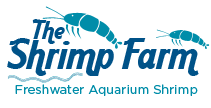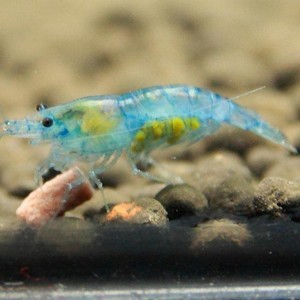Blue Velvet Shrimp Do They Need a Heater
Neocaridina davidi var. Blue, also known as the blue velvet shrimp, is a dwarf shrimp variation appreciated for its bright blue color. It was bred from the same wild form as the more popular red cherry shrimp and its care requirements are mostly the same. It's easy to keep, easy to breed, fun to watch and a perfect (breeding) project for beginners and more experienced shrimp keepers.
Keep reading for everything you need to know about blue velvet shrimp care and keeping blue velvet shrimp in your own aquarium!
Scientific name: Neocaridina davidi var. Blue, formerly Neocaridina heteropoda var. Blue
Common names:Blue velvet shrimp, blue cherry shrimp
Difficulty level: Easy
Origin: Taiwan
Setting up a blue velvet shrimp aquarium
Blue velvet shrimp requirements
Like their red cherry shrimp cousins blue velvet shrimp aren't demanding at all when it comes to housing. An aquarium of at least 5 gallons (19L) is a good place to start, although more is better, especially if you're a beginner. More experienced shrimp keepers might keep their blue velvets in smaller containers, like plant bowls, but if this is the case water quality should be closely monitored.
As with all shrimp and aquariums in general, a blue velvet tank should always be filtered and cycled. Shrimp are very sensitive to ammonia and nitrites so these should always be kept at 0; nitrates should be low as well. If you're looking to breed your blue velvets be sure to use a sponge filter or at least a prefilter sponge, as the fry are very small and can easily be sucked into the filter.
Use plenty of live plants and hides to help your shrimp feel safe. Fine-leaved plants like Java moss are especially appreciated and make a great place for fry to hide and forage. Tubes, caves and cholla wood can be used as hides for the shrimp to retreat to when it's time to molt.
Blue velvet shrimp water quality
Blue velvet shrimp are one of the less sensitive dwarf shrimp varieties, which is one of the reasons they work so well for beginners (or anyone looking for a more low-maintenance shrimp project). As discussed above the tank should always be fully cycled, but other than that this species isn't demanding at all. Keep things stable and test regularly with a liquid test kit to make sure all the water values are still where they should be.
A heater usually isn't needed for blue velvet shrimp as they can survive a very wide range of temperatures. Room temperature works fine. Do consider adding a heater if the temperature is prone to fluctuating, as these shrimp are hardy but do need stable conditions.
pH: 6.2-8
Temperature: 65-85 °F
GH: 4-8
KH: 3-15
Total Dissolved Solids: 150-250
Blue velvet shrimp tankmates
If you're looking to seriously breed your blue velvet shrimp, it's a good idea to stick to a single-species setup or limit tankmates to a few other inverts. Caridina shrimp that need similar water values, Thai micro crabs or snails might work well. Keep in mind that mixing different Neocaridina varieties isn't a good idea, as interbreeding will result in brown, wild-type colored offspring.
Blue velvet shrimp can work in a community aquarium but even the most peaceful fish will snag the occasional fry. The breeding rate should usually be high enough to keep up with this; plenty of cover will also help. Stick to peaceful fish, as carnivorous species are often able to wipe out an entire shrimp colony in a few days.
Blue velvet shrimp diet
Dwarf shrimp like blue velvets are omnivores that thrive on a varied diet. You will constantly see them foraging and picking biofilm off any surface they can find, but don't forget to regularly supplement their diet. There are many high quality shrimp foods out there that work well as a staple. To add some extra variation you can offer frozen foods, algae tabs, tropical fish foods, blanched veggies, nettle leaves, you name it. Practically everything you can find they will eat!
Breeding blue velvet shrimp
Blue velvet shrimp are fast breeders and make a great first breeding project. Make sure you have a few males (smaller, less intense coloration) and a few females (larger, brighter blue), introduce them into the tank and they will take it from there. Keep your water quality high and offer a varied diet to keep the shrimp healthy.
Females should soon start carrying bunches of yellow/green-ish eggs between their back legs (swimmerettes). These hatch into tiny new shrimp after around 30 days. The fry can be left in the main tank and will quickly start foraging and growing.
As with most shrimp, some blue velvets are 'higher quality' than others. This doesn't mean they're healthier or better, they just have intenser coloration. Specimens that are almost translucent are graded lowest but can be selectively bred to eventually produce higher quality offspring.
Buying blue velvet shrimp
If you're looking to start your own blue velvet shrimp colony keep in mind that there are multiple blue shrimp varieties out there. There's blue velvets but also blue pearls, blue jellies, blue dreams, blue tigers, blue rilis... you catch my drift. While they are all blue they are not all the same. Local fish stores that don't specialize in shrimp might accidentally end up mislabeling them. If you don't mind taking a gamble that's not much of a problem, but if you want to be absolutely sure try to buy from a specialized (web) store or at least an experienced hobbyist. The Shrimp Farm sells high quality blue velvet shrimp and ships them right to your doorstep - just click here to order.

Source: https://www.theshrimpfarm.com/posts/blue-velvet-shrimp-care/#:~:text=A%20heater%20usually%20isn't,but%20do%20need%20stable%20conditions.

0 Response to "Blue Velvet Shrimp Do They Need a Heater"
Post a Comment